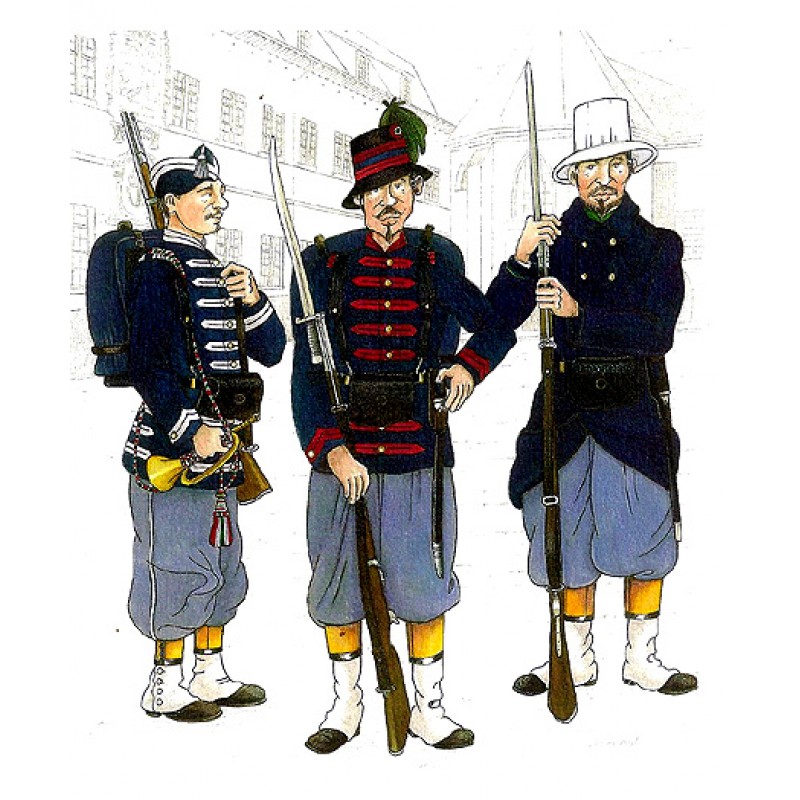This product is sold as a single unpainted figure.
Additional Images.
1. Belgian Legion at Oudenaarde 1864 by Michel Provost (provostmichel.blogspot.com).
2-5. B/W images of the Belgian Legion at Morelia during the war in Mexico. Kindly provided by Michel Provost.
6. The whole French Intervention in Mexico French and Allied Army range.
THE FORGOTTEN LEGION
‘On 1 August 1864, an Admission Commission was installed at Oudenaarde, a
small Flemish city forty-three miles from Brussels, where the recruits for the ‘Belgian
Legion’ received their first instruction with thirty-two carbines loaned by the
government. After a difficult start imposed by lack of money, recruiting began.
The recruits came mainly from all ranks of the Belgian army but there were also
the customary groups of employees and craftsmen dreaming of great adventures or
exotic emotions; parochial dandies, tired of hoping to reach improbable social
standing; up-rooted foreigners (principally Germans) and very young men. Enlistment
was for six years.’
The corps was composed of one battalion of grenadiers and one battalion
of voltigeurs, to be assembled in Mexico by the progressive amalgamation of four
successive detachments sent from Belgium.
- 16 Oct 1864. A staff corps of seven
officers and a battalion staff of seven, 1st Grenadier Company
(four officers, fourteen NCOs, three drummers, three buglers, 125
grenadiers, one femme de compagnie (company woman). 2nd
Grenadier Company, 1st and 2nd Voltigeur Company (the
latter three companies organised in a similar manner to the 1st
Grenadier).
- 14 Nov 1864. Battalion staff of eight. 3rd
and 4th Grenadier and 3rd and 4th
Voltigeur companies (the other rank manpower for these companies was approximately
70 men each). Thirty-five musicians.
- 16 Dec 1864. 5th and 6th
Grenadier and 5th and 6th Voltigeur companies.
Approximately 362 people.
- 27 Jan 1865. Approximately 189 people.
‘As soon as they were assembled in Mexico City, the detachments were
regrouped and renamed according to an Imperial decre. The grenadier detachment
became Bataillon de l’Imperatrice and the voltigeurs became Bataillon
Roi des Belges. The Belgians were
formed in a brigade with the Austrian corps, under the command of General Count
de Thun. This though, was only on paper, the Belgians and Austrians never
fought together.’
Source: ‘Campaigns Magazine’, No
32, The Forgotten Legion article written and illustrated by Liliane and Fred
Funcken, January-February 1982. Contains at least 19 lovely illustrations of
the Belgian Legion and five of the Austrian Legion in Mexico.





-144x144.jpg)
-144x144.jpg)
-144x144.jpg)



-800x800.jpg)
-800x800.jpg)
-800x800.jpg)

